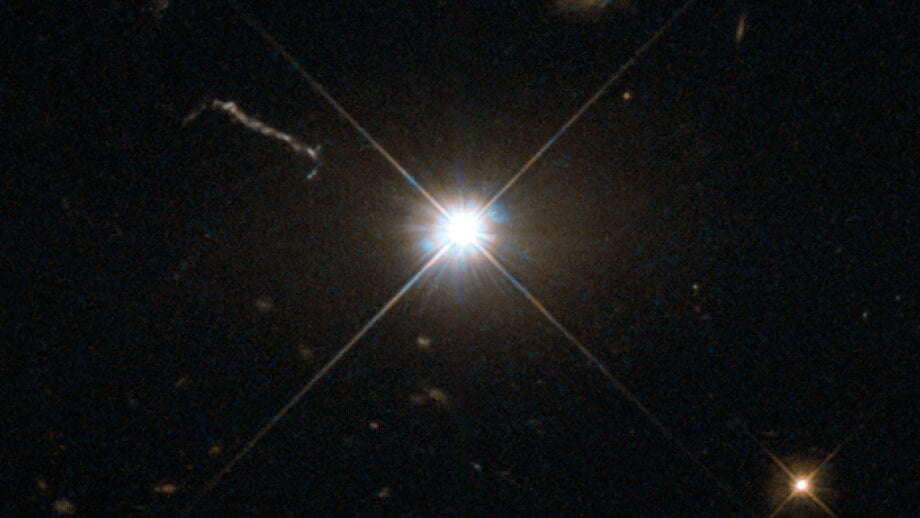
A team of astronomers from the Australian national University has discovered the growing black hole — a quasar. As the researchers note, object, fortunately, located very far away from us, every two days, increases its mass to the solar one. Their discovery, the scientists shared in the article, which is being published in the scientific journal Publications of the Astronomical Society of Australia.
To confirm the discovery helped scientists data collected by the space telescope Gaia, which showed that the observed radiation is a black hole, but rather its disk of accretion.
According to the calculations of researchers, the mass of an object already at the time of radiation amounted to about 20 billion solar masses every million years continues to increase by about 1 percent.
“This black hole is growing so fast that its radiation is thousands of times brighter than an entire galaxy. The radiation occurs due to heating of matter and gases, which it absorbs,” says Christian wolf, an astronomer at the Australian national University and head of research.
“If that monster was in the center of our milky Way, it would be about 10 times brighter than the full Moon. The object would be so bright that it eclipsed the light almost all the stars in the sky,” adds the scientist.
As mentioned above, the black hole, fortunately, located very far away from us, and its light reached Earth after more than 12 billion years since its radiation, the researchers say. Basically this radiation occurs in the ultraviolet and x-ray ranges.
“Again, if that monster was in the center of our galaxy, it is likely that life on Earth would be impossible because they created a very powerful x-ray radiation,” says wolf.
Because of the huge distances and the expansion of the Universe is of a wave of radiation that had to reach us for several billion years, has shifted into the near infrared range. Wolf and his colleagues were able to detect these waves using the SkyMapper telescope located at the Observatory Siding spring (Australia). After that, the researchers used data from the space telescope Gaia. The tool works in the optical range and measures of proper motion stars (displacements of stars on the celestial sphere, which due to their motion relative to the Solar system), as well as parallax – the changes of coordinates of stars, which is due to the change of position of the observer due to the rotation of the Earth around the Sun. The combination of these data allows to know the distance to the light source and understand how they are distributed. Comparing Australian data with ground-based telescope and a space telescope Gaia, the scientists came to the conclusion that before them is a black hole.
“We don’t yet understand why it became so big and why so quickly, from the earliest days of the Universe. However, we’ll keep looking and maybe will be able to find more rapidly growing black holes,” said the wolf.
The scientist adds that the black holes such as this can help you better understand what was the early universe.
“Before such bright supermassive black holes, scientists can see the shadows of other objects. In addition, rapidly growing supermassive black holes absorb very quickly accumulates around them the haze, ionizing the gas and making the Universe more transparent.”
Wolf also notes that such supermassive black holes and new large ground-based telescopes, whose construction will be completed in the next decade, it will be possible to conduct direct measurement of the expansion of the Universe.
Astronomers have discovered the most rapidly growing black hole in the known Universe
Nikolai Khizhnyak